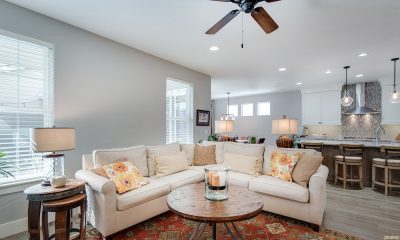Trends
Why a Green Roof? 4 Reasons We’re Seeing an Increase in Green Roof Buildings

Heat islands, or the built-up areas in a city, have temperatures that are 1.8 degrees to 5.4 degrees warmer than surrounding rural areas. Temperatures can be as high as 22F higher in these areas.
Heat islands have led to the rise of the green roof, which has been able to reduce cooling costs, air pollution and even gas emissions.
Green roofs are a mitigating strategy to help offset heat islands, and there are several reasons we’re seeing cities incorporate them into their buildings:
1. Energy Cost Reductions
Hot summer months lead to higher cooling costs. Black, tar roofs don’t absorb heat like green roofs do. When green roofs are installed, heat isn’t attracted – it’s absorbed. Research shows that green roofs can reduce energy demands by as much as 75% in the summer.
Energy costs are also reduced in the winter.
2. A Longer Lifespan
Green roofs are able to last twice as long as their traditional roof counterparts. The main reason for the increase in longevity is that the roof protects against extreme heat. Because the roof absorbs the heat, it takes less damage and its lifespan is extended.
For buildings and cities, this can mean a dramatic reduction in future maintenance and replacement costs.
3. Stormwater Runoff
Stormwater runoff flows off faster on hard roofs than it does on green roofs. Non-porous rooftops are responsible for five times the runoff seen in woodland areas. Stormwater runoff, when increased, is responsible for:
- Sewer overflows
- Flash flooding
Green roofs will reduce and slow runoff, and this is because green roofs are able to retain 90% of precipitation. Even in the winter months when absorption rates are lower, a green roof will be able to absorb 40% of precipitation.
Stormwater is responsible for more than just flooding.
The ability to reduce stormwater runoff will also reduce pollution in cities.
4. Oxygen Production and the Removal of Air Particulates
Green roofs allow for higher oxygen levels, and the roof also acts as a filter. A green roof will be able to remove air particulates, reducing pollution in cities, too. When air conditioning demand is lowered, as we’ve seen with green roofs, this will also lead to lower levels of pollution.
High air conditioning demands increase air pollution and greenhouse gas emissions.
But a green roof is able to lower these air pollution and greenhouse gas emissions. The vegetation removes the greenhouse gases and pollutants through what is called dry deposition.
Green roofs provide an aesthetic benefit, and it also acts as a habitat for animal and plant species. The quality of life is also improved for residents in areas where green roofs are installed. Pollutants and emissions are lower, the air is cleaner and the heat island effect is reduced.
Noise pollution is also lowered thanks to the green roof’s ability to absorb and reduce sounds. The roof will act as a sound insulation layer on buildings, and in bustling cities, this can lead to a rise in overall resident happiness, too.




